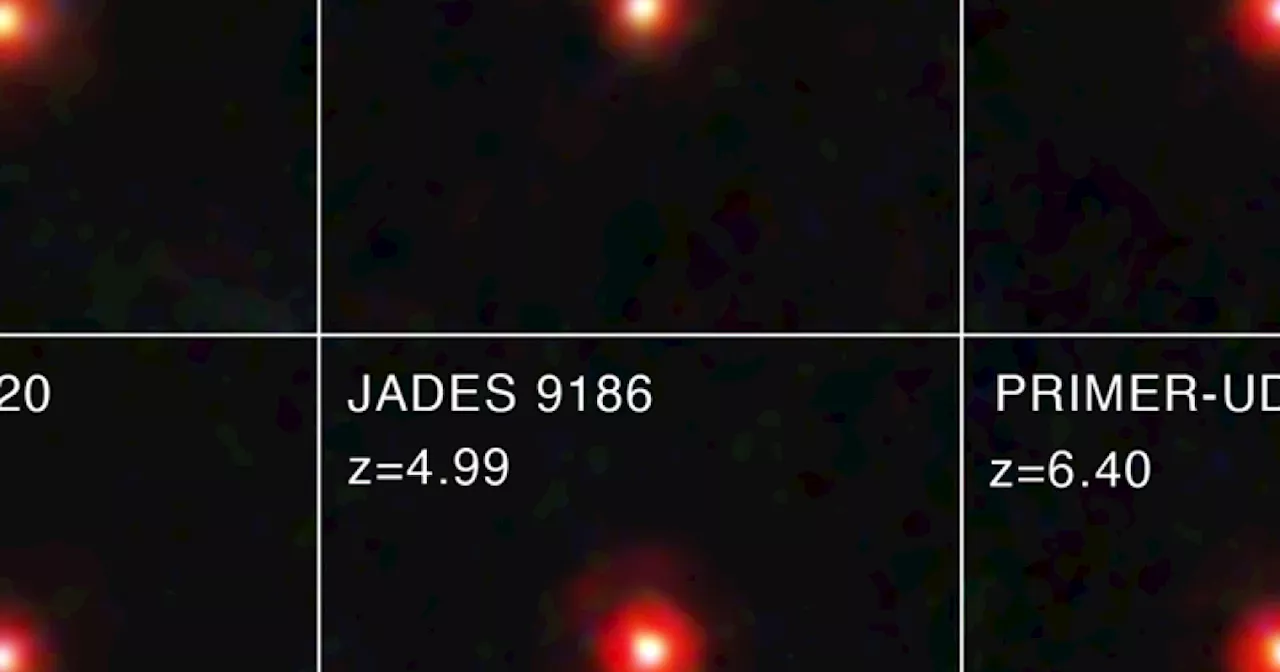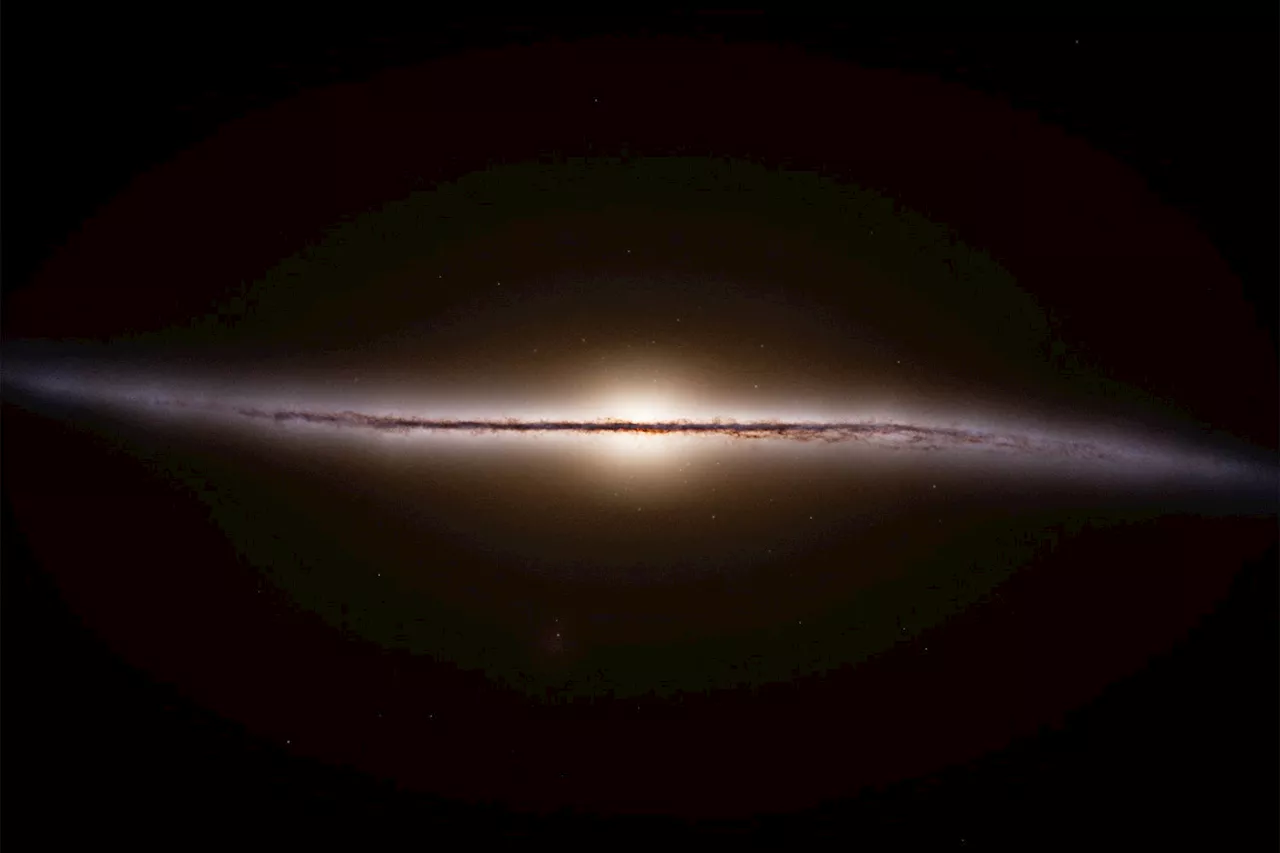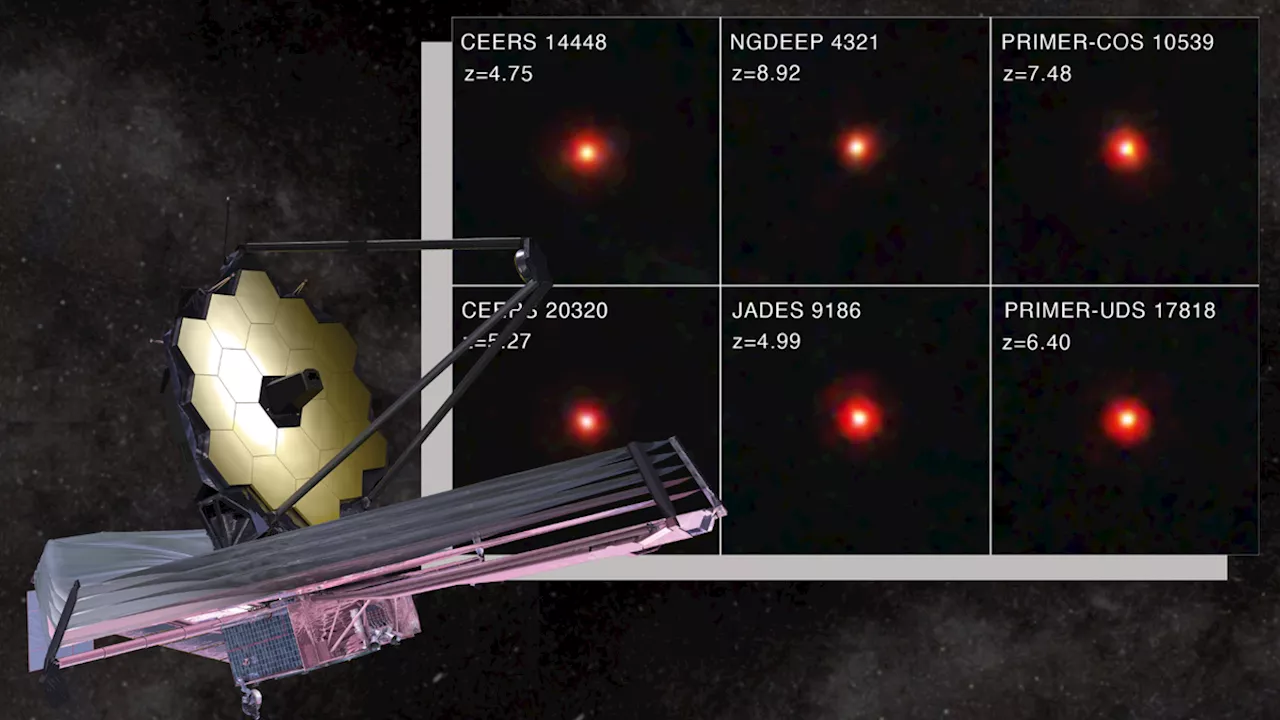Galaxies like the Milky Way grow by merging with smaller galaxies over billions of years, unlike dwarf galaxies, which have long been thought to lack the heft to attract mass and grow in the same way. New observations challenge this view, suggesting that even dwarf galaxies can accrete mass from other small galaxies.
Large and small galaxies may grow in ways more similar than expected." ScienceDaily. ScienceDaily, 16 January 2025. <www.sciencedaily.com
A new study has found galaxies with more neighbors tend to be larger than their counterparts that have a similar shape and mass, but reside in less dense environments. The team, which used a ... If you look at massive galaxies teeming with stars, you might be forgiven in thinking they are star factories, churning out brilliant balls of gas. But actually, less evolved dwarf galaxies have ...
According to the standard model of cosmology, the vast majority of galaxies are surrounded by a halo of dark matter particles. This halo is invisible, but its mass exerts a strong gravitational pull ... Three dozen dwarf galaxies far from each other had a simultaneous 'baby boom' of new stars, an unexpected discovery that challenges current theories on how galaxies grow and may enhance our ...The Universe Is Expanding Too Fast to Fit Theories: Hubble Tension in CrisisThis Fast and Agile Robotic Insect Could Someday Aid in Mechanical Pollination
Astrophysics Stars Astronomy Solar Flare Black Holes Nebulae Space Telescopes
United States Latest News, United States Headlines
Similar News:You can also read news stories similar to this one that we have collected from other news sources.
 Astronomers Discover Rare 'String of Cosmic Pearls' - Five Aligned Dwarf GalaxiesA team of astronomers has made a remarkable discovery: a group of five dwarf galaxies aligned in a near-perfect line, resembling a string of cosmic pearls. This rare find challenges our understanding of dwarf galaxy behavior.
Astronomers Discover Rare 'String of Cosmic Pearls' - Five Aligned Dwarf GalaxiesA team of astronomers has made a remarkable discovery: a group of five dwarf galaxies aligned in a near-perfect line, resembling a string of cosmic pearls. This rare find challenges our understanding of dwarf galaxy behavior.
Read more »
 Astronomers Discover 'String of Cosmic Pearls' - A Rare Aligned Group of Dwarf GalaxiesAstronomers have found a unique grouping of five dwarf galaxies positioned in a nearly perfect alignment, resembling a string of pearls in the sky. This rare arrangement, located about 117 million light-years away, presents a challenge to our current understanding of cosmic evolution. The galaxies, designated D1 to D5, exhibit active star formation and engage in gravitational interactions, including a cosmic 'tug of war' that pulls gas and stars between them. This discovery raises questions about the formation and evolution of these galaxies and their alignment.
Astronomers Discover 'String of Cosmic Pearls' - A Rare Aligned Group of Dwarf GalaxiesAstronomers have found a unique grouping of five dwarf galaxies positioned in a nearly perfect alignment, resembling a string of pearls in the sky. This rare arrangement, located about 117 million light-years away, presents a challenge to our current understanding of cosmic evolution. The galaxies, designated D1 to D5, exhibit active star formation and engage in gravitational interactions, including a cosmic 'tug of war' that pulls gas and stars between them. This discovery raises questions about the formation and evolution of these galaxies and their alignment.
Read more »
 Ghost Towns of the Universe: Ultra-Faint Dwarf Galaxies Offer Clues to Early Star FormationAstronomers have discovered three ultra-faint dwarf galaxies in a pristine, isolated environment, devoid of gas and populated solely by ancient stars. This finding supports theories that star formation in these tiny galaxies was abruptly halted in the early Universe, possibly due to the Epoch of Reionization or early supernova explosions.
Ghost Towns of the Universe: Ultra-Faint Dwarf Galaxies Offer Clues to Early Star FormationAstronomers have discovered three ultra-faint dwarf galaxies in a pristine, isolated environment, devoid of gas and populated solely by ancient stars. This finding supports theories that star formation in these tiny galaxies was abruptly halted in the early Universe, possibly due to the Epoch of Reionization or early supernova explosions.
Read more »
 Astronomers Discover Cosmic 'Little Red Dots' May Be Early GalaxiesA team of astronomers analyzing data from the James Webb Space Telescope (JWST) has identified a large number of 'little red dots,' compact reddish objects in the early universe. These dots appear to be transient, existing mainly a billion years after the Big Bang and then fading away. Further analysis suggests they could be actively growing supermassive black holes, potentially forming the cores of today's massive galaxies.
Astronomers Discover Cosmic 'Little Red Dots' May Be Early GalaxiesA team of astronomers analyzing data from the James Webb Space Telescope (JWST) has identified a large number of 'little red dots,' compact reddish objects in the early universe. These dots appear to be transient, existing mainly a billion years after the Big Bang and then fading away. Further analysis suggests they could be actively growing supermassive black holes, potentially forming the cores of today's massive galaxies.
Read more »
 Gaia Mission Completes Milky Way MapThe European Space Agency's Gaia mission has finished creating a detailed map of the Milky Way galaxy, using over three trillion observations of two billion stars and other objects. This massive dataset provides the most precise view of our galaxy to date, revealing unexpected details about its structure and evolution.
Gaia Mission Completes Milky Way MapThe European Space Agency's Gaia mission has finished creating a detailed map of the Milky Way galaxy, using over three trillion observations of two billion stars and other objects. This massive dataset provides the most precise view of our galaxy to date, revealing unexpected details about its structure and evolution.
Read more »
 Little Red Dot Galaxies: A Cosmic Puzzle Solved?The James Webb Space Telescope (JWST) has revealed a new population of ancient galaxies called 'little red dots.' These galaxies were initially thought to contain an unexpectedly high number of stars for their age. However, a new study suggests that their brightness is largely due to active galactic nuclei (AGNs) powered by supermassive black holes. This discovery helps to explain some of the mysteries surrounding the early universe's luminosity.
Little Red Dot Galaxies: A Cosmic Puzzle Solved?The James Webb Space Telescope (JWST) has revealed a new population of ancient galaxies called 'little red dots.' These galaxies were initially thought to contain an unexpectedly high number of stars for their age. However, a new study suggests that their brightness is largely due to active galactic nuclei (AGNs) powered by supermassive black holes. This discovery helps to explain some of the mysteries surrounding the early universe's luminosity.
Read more »
